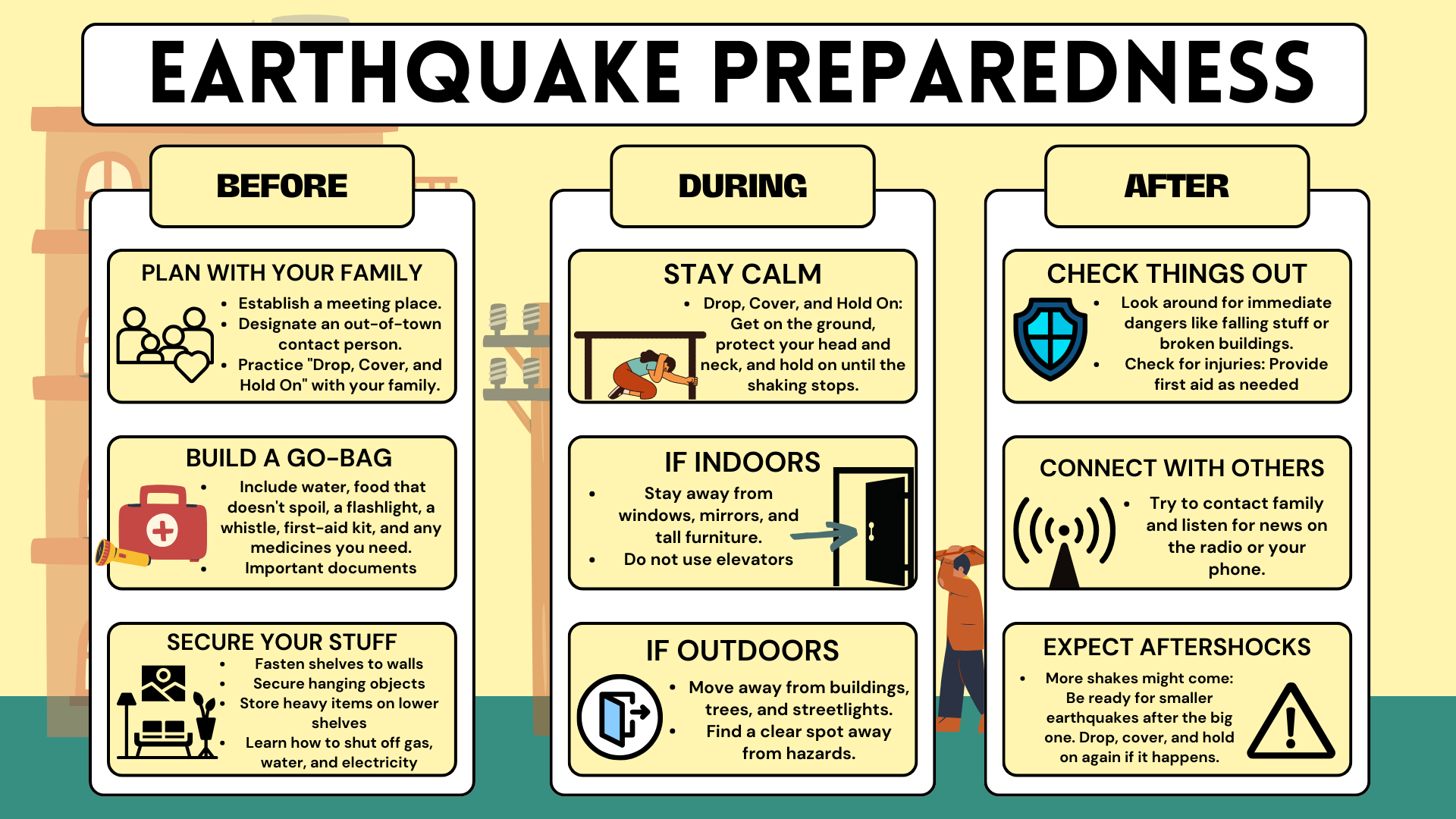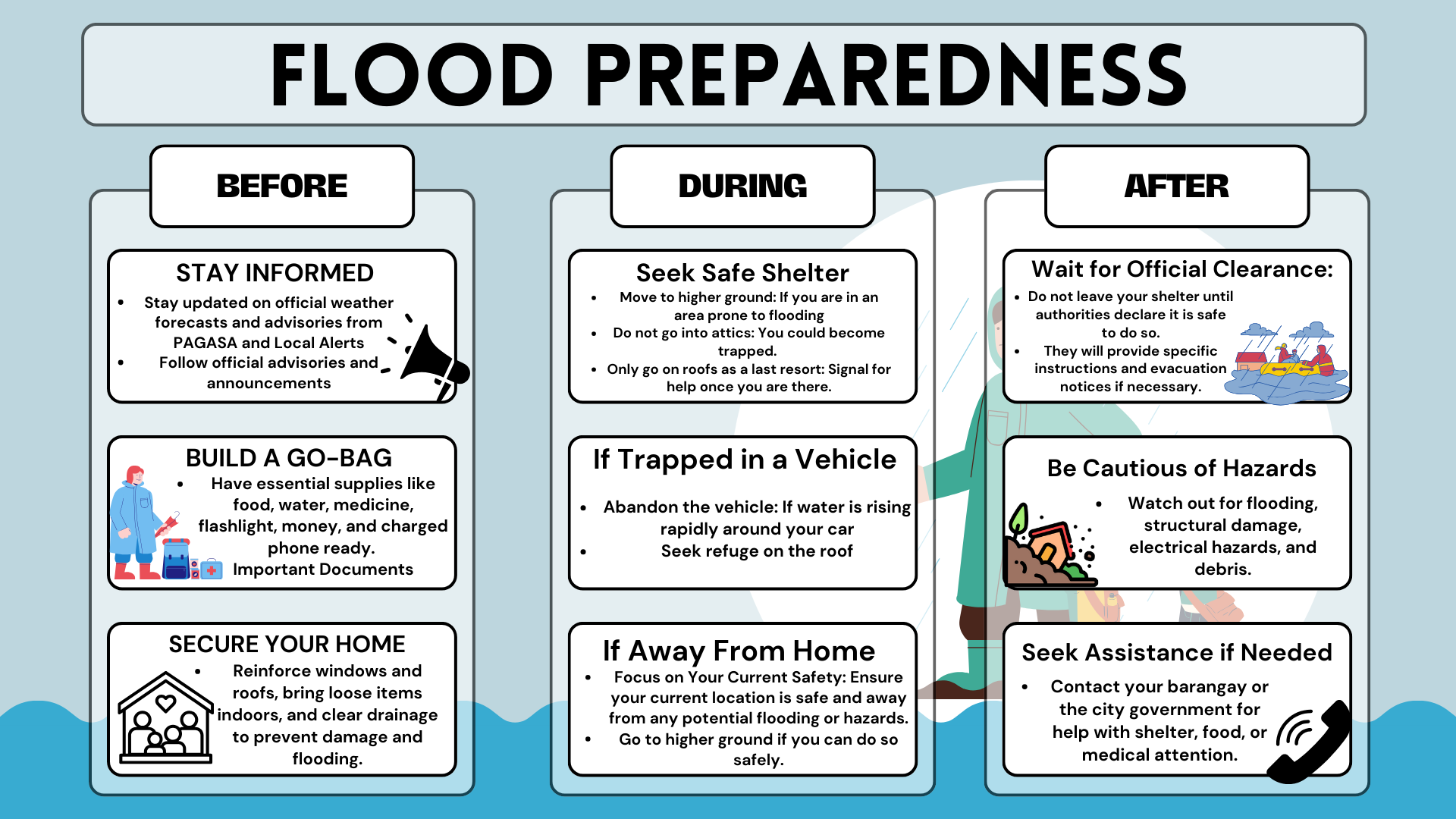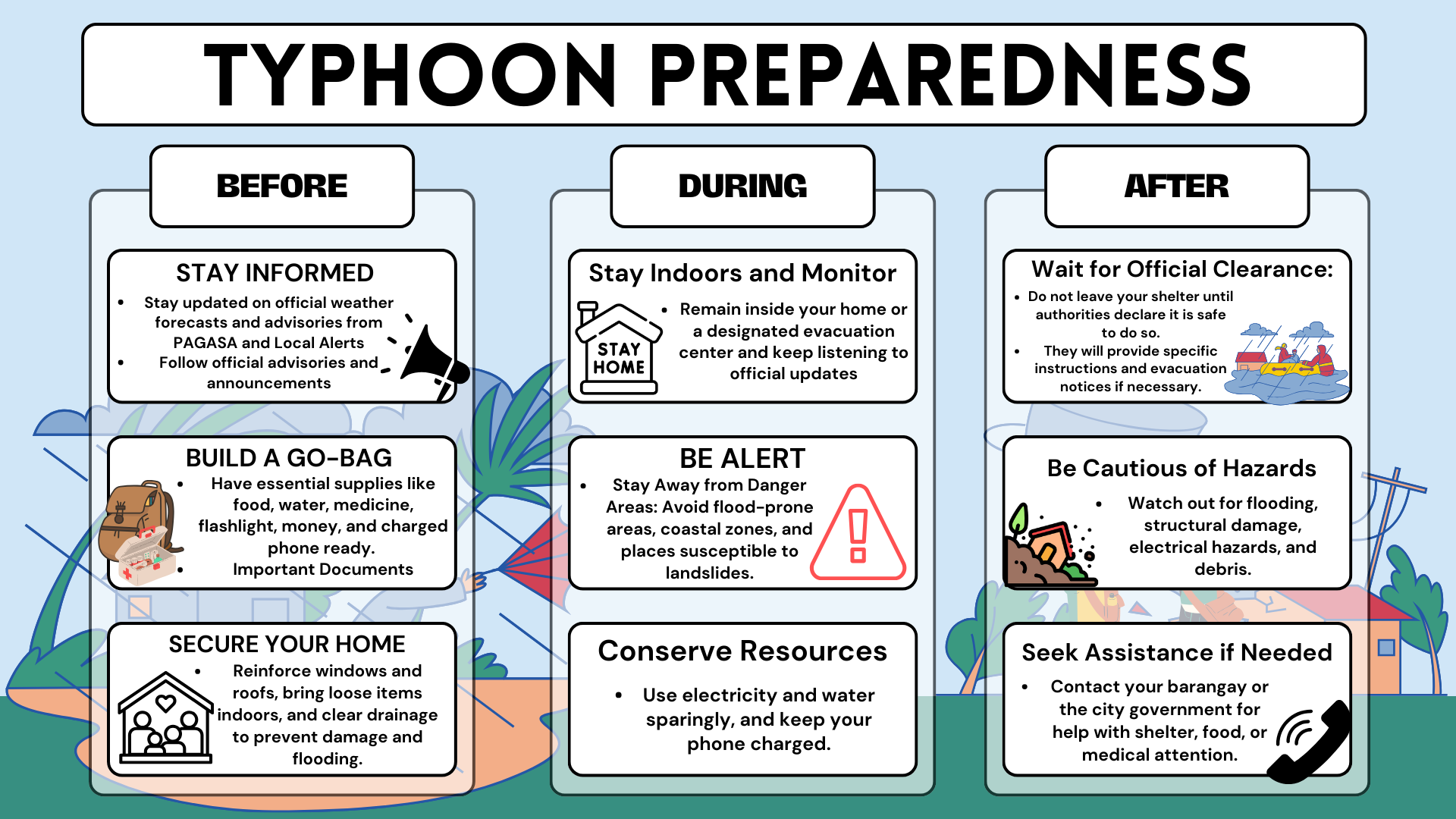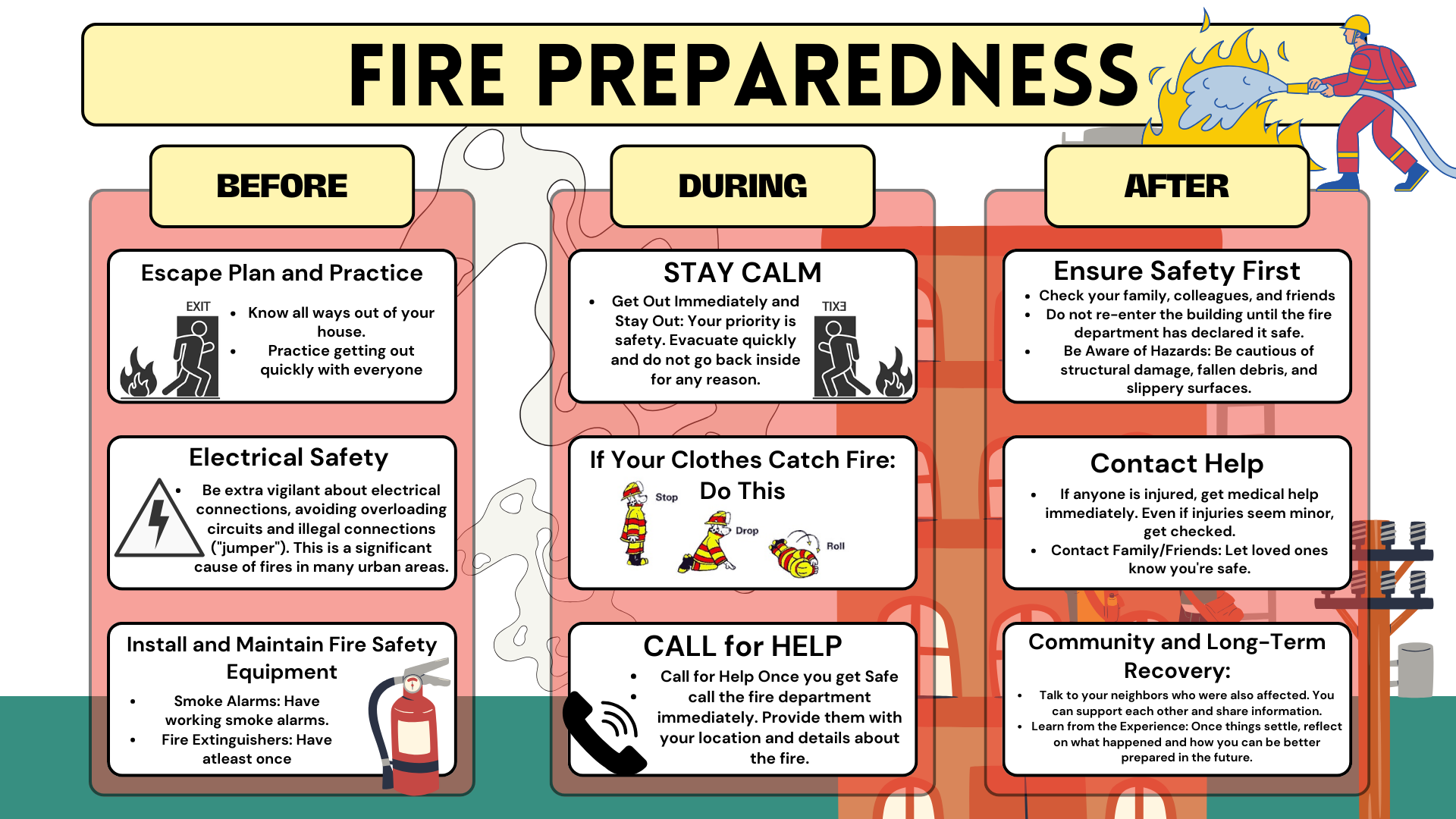
A disaster is a sudden, catastrophic event that causes significant disruption to normal life, resulting in loss of life, damage to property, and adverse effects on the environment. Disasters can occur due to natural or human-made causes and often overwhelm the capacity of affected communities to respond and recover without external assistance.
According to City of Mandaluyong, Brgy. Addition Hills is prone to these natural and man made disasters: earthquake, flood, typhoon, and fire. Let’s define what are these disasters and how to prepare for all of them.
An earthquake is the sudden shaking or trembling of the Earth's surface caused by the movement of tectonic plates, volcanic activity, or human-induced factors like mining or reservoir-induced seismicity.
Tap the image above to play the video

A flood is a natural disaster characterized by an overflow of water that submerges land that is usually dry. It occurs when water from heavy rainfall, melting snow, rivers, dams, or oceans exceeds the capacity of natural or man-made drainage systems and inundates surrounding areas.
Tap the image above to play the video

A typhoon is a powerful tropical cyclone that forms over warm ocean waters in the Northwest Pacific Ocean. It is characterized by strong winds, heavy rainfall, and potential storm surges. Typhoons are similar to hurricanes and cyclones, differing only in their geographic location.
Tap the image above to play the video

A fire is a rapid oxidation process that releases heat, light, and various reaction products. While fire can be beneficial for cooking, heating, and industrial processes, uncontrolled fires—such as wildfires or structural fires—can cause significant destruction and pose a serious threat to life and property.
Tap the image above to play the video
